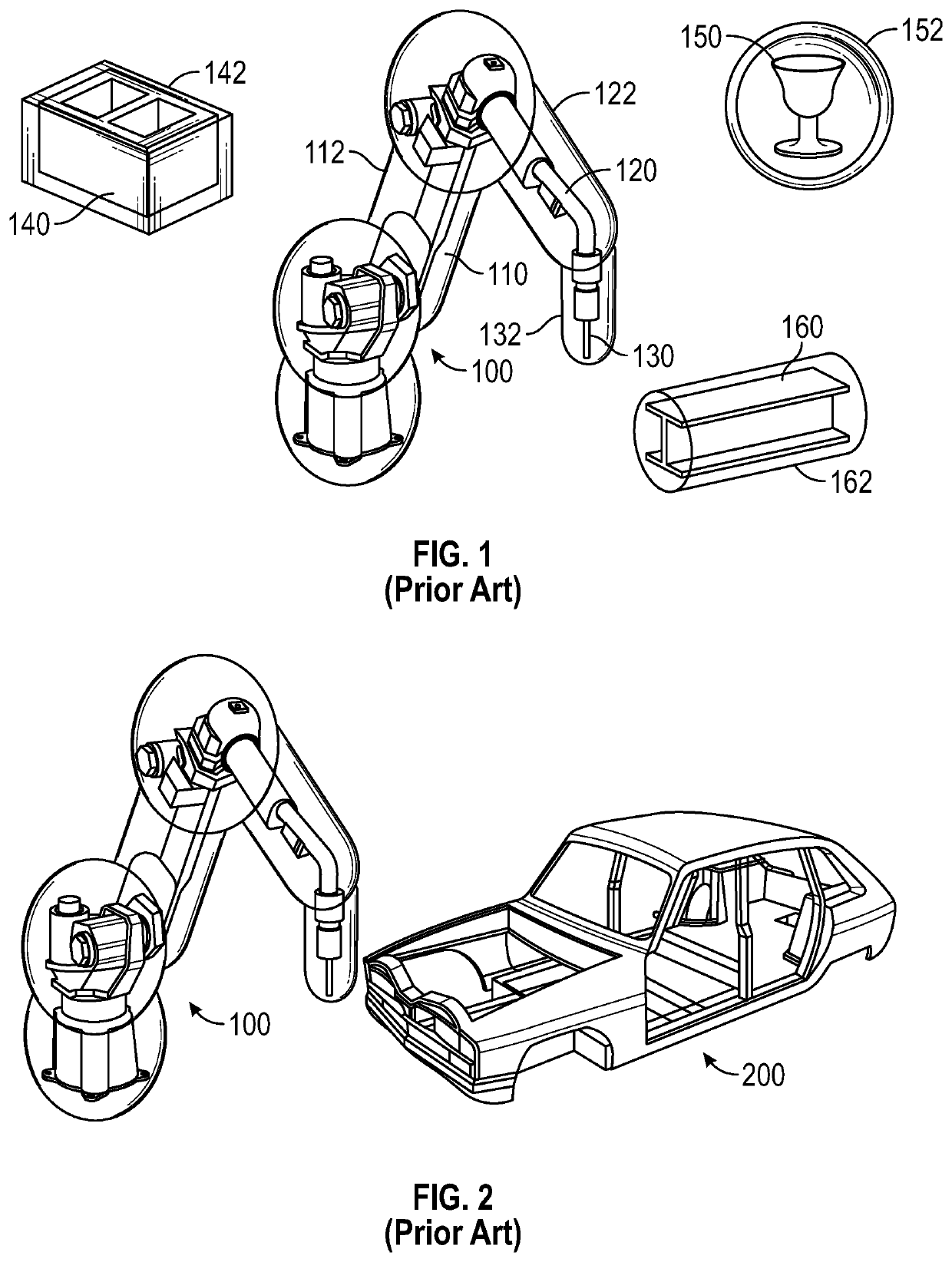Fast robot motion optimization with distance field
a robot and distance field technology, applied in the field of industrial robot motion control, can solve the problems of reducing the efficiency so as to reduce the objective function, and reduce the difficulty of robot arm operation
- Summary
- Abstract
- Description
- Claims
- Application Information
AI Technical Summary
Benefits of technology
Problems solved by technology
Method used
Image
Examples
Embodiment Construction
[0019]The following discussion of the embodiments of the disclosure directed to a robot collision avoidance motion optimization technique using a distance field constraint function is merely exemplary in nature, and is in no way intended to limit the disclosed devices and techniques or their applications or uses.
[0020]It is well known to use industrial robots for a variety of manufacturing, assembly and material movement operations. In many robot workspace environments, obstacles are present and may be in the path of the robot's motion—that is, the obstacles may be located between where a robot is currently positioned and the robot's destination position. The obstacles may be permanent structures such as machines and fixtures, or the obstacles may be temporary or mobile. A large workpiece which is being operated on by the robot may itself be an obstacle, as the robot must maneuver in or around the workpiece while performing an operation such as welding. Techniques have been develope...
PUM
 Login to View More
Login to View More Abstract
Description
Claims
Application Information
 Login to View More
Login to View More - R&D
- Intellectual Property
- Life Sciences
- Materials
- Tech Scout
- Unparalleled Data Quality
- Higher Quality Content
- 60% Fewer Hallucinations
Browse by: Latest US Patents, China's latest patents, Technical Efficacy Thesaurus, Application Domain, Technology Topic, Popular Technical Reports.
© 2025 PatSnap. All rights reserved.Legal|Privacy policy|Modern Slavery Act Transparency Statement|Sitemap|About US| Contact US: help@patsnap.com



